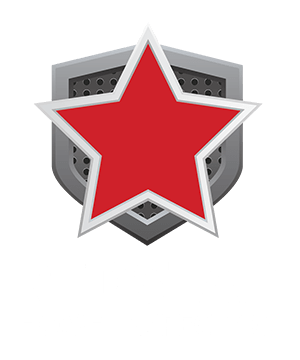Home Inspection Terms – Glossary – Damper to Dutch Lap Method
Damper:
A damper is a flat plate that opens and closes to control amount of air flowing through a heating duct, exhaust vent, flue, or chimney.
Dampproofing: To coat a surface to prevent the passage of moisture.
Dangerous or Adverse Situations: Situations which pose a threat of injury to the inspector, and those situations which require the use of special protective clothing or safety equipment.
Dead Load: The weight of permanent, stationary construction included in a building.
Dead Men: Home Inspectors who have fallen off a roof.
Deck: The surface installed over the supporting framing members, to which the roofing is applied. Also, an uncovered porch type structure normally constructed with unpainted lumber with a gap between the flooring material.
Deck Roof: A nearly flat roof constructed without a fire wall.
Deficiency: An inadequacy in the structure or one of its components.
Deficient: In functionally deficient condition, needs immediate repair or replacement.
Dehumidifier: A refrigeration device designed to remove water vapor from the air.
Delta-T: A difference in degrees Fahrenheit or the high and low temperature of a system such as an air conditioner or heat pump.
Den: The same configuration as a bedroom without a closet.
Deterioration: Impairment of condition.
Diagonal Brace: A support placed at a 45 degree angle which had the purpose of bracing a part of a structure against lateral loads.
Diameter: The width or thickness of a circular, or somewhat circular, object.
Dimension Lumber: Lumber which is two to five (2″-5″) thick and up to twelve inches (12″) wide.
Discontinuous Member: A member which has one or more break points and is not considered a whole unit unless tied or fastened together.
Dismantle: To take apart or remove any component, device or piece of equipment that is bolted, screwed or fastened by other means and that would not be dismantled by a homeowner in the course of normal household maintenance.
Distribution Box: A fuse box; a metal box containing fuses and circuit breakers that permits access to connecting branch circuits. An underground box that receives waste from a septic tank and distributes it to the laterals of a disposal field.
Distribution Panel: An insulated board from which electrical connections are made between the main feed circuit and branch distribution circuits.
Diving Board: A board permanently and securely fastened above a swimming pool from which a person may project himself/herself into the water head first.
Division Wall: An interior load-bearing wall dividing a structure into rooms.
Dock: A structure extending from the shore into the water that permits the mooring of vessels.
Dome: A hemispherical roof or ceiling constructed to exert equal, oblique thrust in all directions.
Door Stop: A trim piece place around the inside face of side and top door jambs to prevent damage from the door swinging too far.
Dormer: A framed window unit projecting through the sloping plane of a roof.
Double Coverage: Application of asphalt roofing such that the lapped portion is at least 2 inches wider than the exposed portion. Results in two layers of roofing material over the deck.
Double Floor: Wood construction using a sub-floor and a finished floor.
Double Framing: A building technique using double joists, trimmers and other structural members where reinforcement is needed.
Double-Gabled Roof: See butterfly roof.
Double-Glazing: A double-glass pane hermetically sealed with an air space between the two panes to provide insulation.
Double-Hung Window: A window with two movable sashes that slide vertically.
Double-Pitch Roof: A roof that slopes in two directions.
Double Tap: Two electrical conductors fastened to a single safety device.
Dovetail: An interlocking joint commonly used in carpentry.
Dowel: Cylindrical wood peg fitted into a hove drilled through two pieces of wood.
Downdraft: A downward current of air in a chimney, often carrying smoke with it.
Downspout: A pipe for draining water from roof gutters. Also called a leader.
Drag Strut: A member designed to transfer axial loads between shear-walls. Bond beams and top plates are members that can be used as a drag strut.
Drainage: A system of drains, e.g., tiles, pipes, conduits, designed to remove surface or subsurface water or waste water and sewage.
Drain Field: An area containing a system of underground lateral pipes for the purpose of draining septic systems.
Drain Tile: Tubing used in the construction of a building to assist in carrying water away from the structure.
Drip Edge: A non-corrosive, non-staining material used along the eaves and rakes to allow water run-off to drip clear of underlying construction.
Dry Rot: A decay of seasoned wood caused by fungus.
Drywall: Any finish material applied to an interior wall in a dry state, as distinguished from plaster, e.g., gypsum wallboard, plywood, fiberwood.
Drywall Construction: A type of interior wall construction using wood paneling, plywood, plasterboard, or any other type of wallboard instead of plaster as the finish material.
Dry Well: A covered pit, either with open-jointed lining or filled with coarse aggregate, through which drainage from downspouts of foundation footing drains may seep into the surrounding soil.
Duct: Large channel through which air passes in a heating, cooling or exhaust system.
Duplex: A house containing two separate dwelling units, side by side or above the other; also describes apartments that occupy two levels or a portion of two floors.
Dutch Door: A door divided horizontally in the middle so that the bottom half can remain closed while the top is open.
Dutch Lap Method:
Dutch Lap Method is an application of giant individual shingles with the long dimension parallel to the eaves. Shingles are applied to overlay adjacent shingles in each course as well as the course below.






